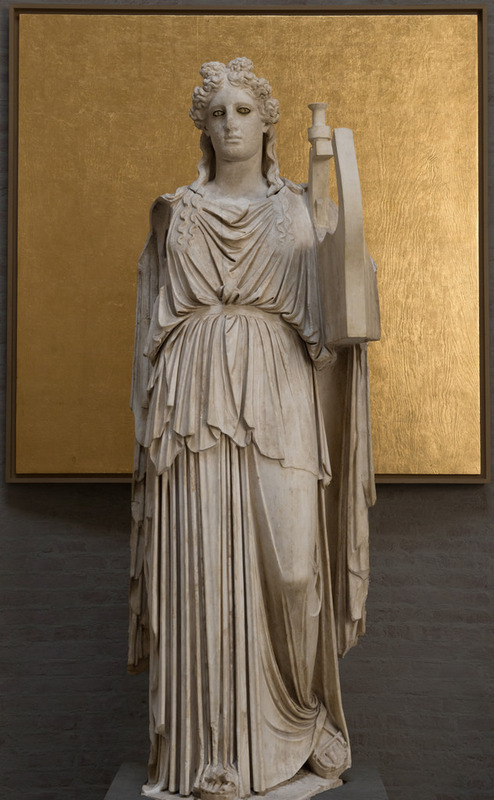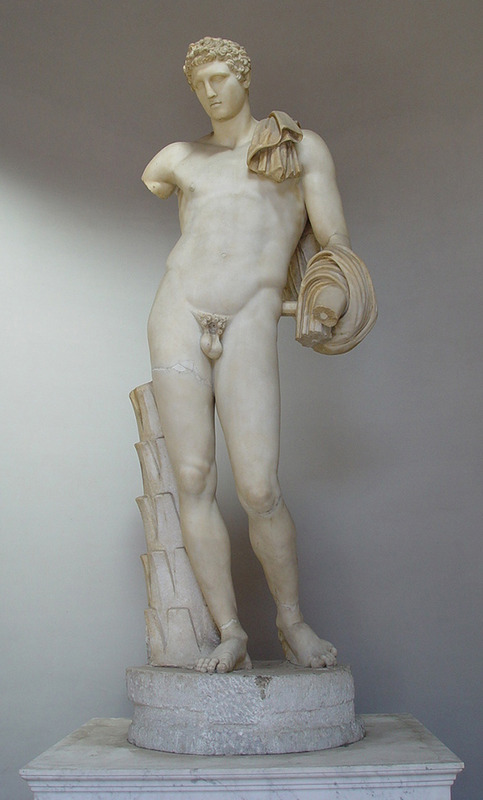The Pitfalls of Reconstruction

Figure 7. Barberini Muse, marble, (Glyptothek, Munich).

Figure 8. Belvedere Antinous, marble, (Vatican, Rome).
Many of Winckelmann’s classifications have since been discredited by the discovery that many of the works he so admired were not Greek originals, but later Roman copies. In History he claims that the Barberini Muse (Figure 7) represents “one of the very oldest statues in Rome”, believing that its integration of archaic stylization and classical simplicity dated it to the transition between the archaic and high periods. It is now believed, however, to be a Greco-Roman adaptation of late classical type from the 4th century BC, not a Greek original.1 Winckelmann himself appeared to realize the difficulty of distinguishing works of the Greek high and beautiful phases from later imitations or reinterpretations. For instance, he describes the Belvedere Antinous (Figure 8) in terms that evoke the beautiful, although he is careful not to make an explicit pronouncement of this style, acknowledging that it most likely originates from a later period.2
This uncertainty was fundamentally a tension at the heart of his project, which sought to reconcile a systematic, theoretical explanation of the development of styles with a compromised body of evidence. He concludes Part Two of the The History of the Art of Antiquity with the following passage:
I have in this history of art already gone beyond its set bounds, and although contemplating the collapse of art has driven me nearly to despair, still, like someone who, in writing the history of his native land, must touch upon the destruction that he himself has witnessed, I could not keep myself from gazing after the fate of works of art as far as my eye could see. Just as a beloved stands on the seashore and follows with tearful eyes her departing sweetheart, with no hope of seeing him again, and believes she can glimpse even in the distant sail the image of her lover—so we, like the lover, have as it were only a shadowy outline of the subject of our desires remaining. But this arouses so much the greater longing for what is lost, and we examine the copies we have with greater attention than we would if we were in full possession of the originals. In this, we are often like individuals who wish to converse with spirits and believe they can see something where nothing exists.3
Here, Winckelmann frames the historian’s task less as one of grand reconstruction than of self-delusion, lamenting the loss of those sculptures of the Greek ideal without acknowledging the fragility of his own narrative, which clung to the remnants of this lost civilization. In so doing, he exposed the personal character of this antiquarian endeavor—a deep investment in the cause of Greek antiquity that heightened History's appeal to its Enlightenment readers and that would profoundly influence generations of classicists and art historians.